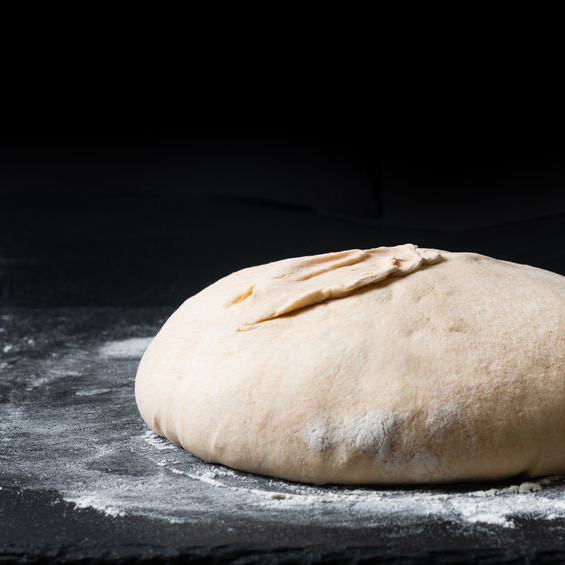
Fermentation
What is Fermentation?
Fermentation is an anaerobic biological process that converts sugars and starches into simpler substances. In baking, it causes yeast and bacteria to convert sugars into carbon dioxide, among other things. This is what causes the dough to rise.
Besides dough, fermentation is also used for the production of:
- Dairy products, such as cheese, yogurt, kefir, kumis
- Hydrocolloids, like xanthan gum
- Organic acids, like citric acid
- Enzymes
- Chocolate and flavors
- Vitamins and antibiotics
Origin
The use of fermentation in bread can be traced to the ancient Egyptians in 4000 BCE. In 1854, French chemist and microbiologist Louis Pasteur determined that it was microorganisms in the air that caused food to ferment and spoil.2,3
How it works
In bakery products, fermentation is a complex series of biological reactions that allow dough to leaven. It is carried out by strains of Saccharomyces cerevisiae yeast, wild yeast and lactic acid bacteria (LAB). These microorganisms start by consuming simple sugars in the flour and generated by amylase. This produces CO2 and other compounds, which are responsible for the unique flavor and texture of bread.3
The process starts once yeast/LAB is added to the flour and water, either as individual ingredients or preferments. It continues through early stages of baking where the yeast/LAB is inactivated by heat. The fastest rate occurs during proofing and oven spring stages.
Fermentation stages in bread:
- Preferment (optional step): Flour, yeast, water are fermented for a long time. This is essential for the development of unique flavors in some breads and enhancing shelf life.
- First fermentation: Mixing prefrements with rest of dough composition. This step may last up to 8 hours in artisan breads.
- Second fermentation: Takes place after the dough is first punched.
- Proofing: After dough make up and can last from 1 hr to 1 day.
- Baking: Loaves are expanded due to yeast and steam generation.
Application
Different microorganisms and fermentation types have different uses in bread dough:3,4
| Type | Application | Commonly Used Microorganisms |
|
Alcoholic fermentation / yeast Reaction: |
|
|
|
Lactic fermentation / lactic acid bacteria (LAB) Homofermentative reaction: |
|
|
|
Lactic / lactic acid bacteria (LAB) Heterofermentative reaction: |
|
|
Ideal conditions for yeast and LAB fermentation in dough:2,3,4
- pH: primarily acidic to slightly acidic (4.5–6.5).
- Temperature: 95–113°F (35–45°C). At lower temperatures, fermentation slows down while higher temperatures produce undesirable aromas and excessive acid buildup.
- Relative humidity (RH%): ideally between 50% and 90%.
- Carbon source: LAB and yeast feed on monosaccharides and disaccharides.
- Sugar level: 2.0–10.0%. Higher levels can negatively impact microbial activity due to osmotic pressure. Residual unfermented sugars are necessary during baking for proper crust color development.
- Salt level: up to 2.5%. Higher levels exert considerable osmotic stress on yeast cells.
- Water content: Absorption levels of 50.0% or higher, based on flour weight, are optimal. Higher levels lead to faster/uncontrollable yeast activity.
- Yeast/LAB levels: The higher the yeast/LAB level, the shorter the total fermentation time required to mature the dough.
Fermentation and clean label baking
Extended dough fermentation has been used effectively for improving dough development and enhancing bread shelf life. In this context, this process is considered an effective alternative to traditional dough conditioners. So this provides bakers with the means to produce clean label bakery products.2
References
- Stanbury, P.F., Whitaker, A., and Hall, S.J. “An Introduction to Fermentation Processes.” Principles of Fermentation Technology, 3rd edition, Butterworth-Heinemann, Elsevier Ltd., 2017, pp. 1–20.
- Hutkins, R.W. “Bread.” Microbiology and Technology of Fermented Foods, 2nd edition, John Wiley & Sons Ltd, 2019, pp. 301–342.
- Lee, B.H. “Yeast-Based Processes and Products.” Fundamentals of Food Biotechnology, 2nd edition, John Wiley & Sons Ltd, 2015, pp. 207–237.
- Hui, Y.H., et al. “Fermented Cereal Products.” Handbook of Food and Beverage Fermentation Technology, Marcel Dekker, Inc., 2004, pp. 712–799.

